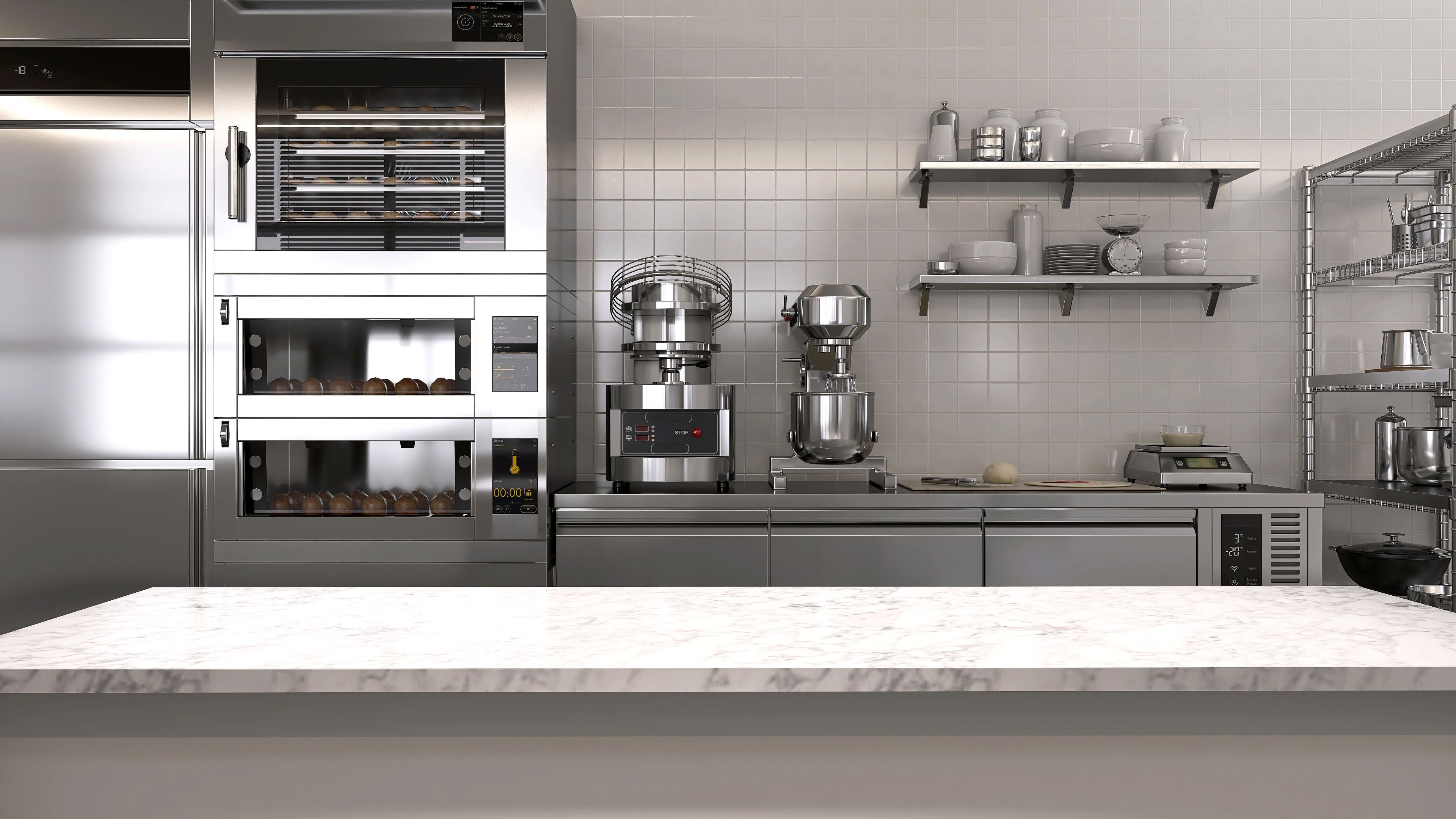Why Use a Vinyl Wrap for a Restaurant Kitchen Countertop?
Surfaces in professional kitchens face multiple challenges:
High temperatures: Proximity to stovetops, steam from boiling liquids.
Constant humidity: Condensation, water, and grease splashes.
Harsh cleaning products: Strong degreasers, food-safe solvents.
Scratches and impacts from utensils and equipment: Knife marks, heavy dishes, and repeated friction from food prep and handling.
A high-quality vinyl wrap allows you to modernize or protect an existing countertop without major renovations or long downtime. Available in various finishes (wood, concrete, marble, stainless steel), it can match the style of any establishment.
Preparing the Countertop Before Application
1. Deep Cleaning and Degreasing
Proper cleaning is a crucial step to prevent the adhesive from peeling prematurely.
Use a strong degreaser, preferably a mix of warm water and 90% isopropyl alcohol, to remove all grease, oil, and food residues.
Scrub thoroughly with a clean cloth or microfiber to remove embedded particles.
Dry completely to prevent any moisture from compromising adhesion.
2. Inspecting and Fixing Surface Imperfections
An uneven countertop can cause issues with vinyl application:
Check the surface under a light source to detect cracks, holes, or bumps.
Apply a smoothing filler to deep scratches and imperfections, then lightly sand once dry.
Fine sanding (400 to 600 grit) improves adhesion, especially on glossy or lacquered surfaces.
Choosing the Right Vinyl Wrap for a Restaurant Kitchen
1. Resistance to Harsh Conditions
Restaurant kitchens require a durable and robust vinyl film:
Heat resistance: Choose a wrap that can withstand temperatures up to 80°C (176°F) to avoid warping near hot zones.
Waterproof properties: A moisture-resistant vinyl prevents swelling or peeling from water infiltration.
Chemical resistance: The adhesive must withstand exposure to industrial kitchen cleaners.
2. The Right Finish for Everyday Use
Certain textures are better suited for busy kitchens:
Matte or textured finishes: Less prone to fingerprints and minor scratches.
Stone or stainless steel effect: Easy to clean and provides a modern, high-end look.
Application Techniques for Optimal Results
1. Step-by-Step Application and Smoothing
Work in sections to prevent air bubbles and uneven application.
Start from the center of the countertop, then smooth outward toward the edges using a flexible squeegee.
2. Heating and Reinforcing the Edges
Use a heat gun (50-60°C / 122-140°F) to soften the film and maximize adhesion on the edges.
Apply firm pressure on angles and seams to prevent future peeling.
Sealing and Protecting the Vinyl Wrap
1. Securing High-Risk Areas
To ensure perfect waterproofing and protect the wrap:
Apply a clear silicone sealant around the edges to prevent water from seeping under the vinyl.
Reinforce corners with a liquid sealant to prevent lifting over time.
2. Proper Cleaning and Maintenance
Use mild cleaners (neutral soap, diluted white vinegar) to preserve the wrap’s integrity.
Avoid abrasive sponges and harsh solvents, as they can damage the protective coating.
Common Mistakes to Avoid
Failing to properly clean the surface before application, leading to bubbles and early peeling.
Skipping a primer on ultra-smooth surfaces, reducing adhesion effectiveness.
Cutting the vinyl too precisely, without allowing extra material to cover the edges properly.
Not heating the edges and corners after application, compromising long-term durability.
Why Choose a Cover Styl Vinyl Wrap for a Restaurant Kitchen?
Cover Styl offers ultra-resistant vinyl wraps specifically designed for demanding environments like professional kitchens. With a quick installation process and no major renovations needed, these solutions allow you to refresh a space while ensuring excellent durability against daily wear and tear.
By following these expert techniques and best installation practices, a vinyl wrap becomes a long-lasting and stylish solution to update a restaurant kitchen countertop while providing optimal protection.
